Uncover the Secrets of Eerie Folklore Across the US
Imagine walking alone on a dimly lit street, the chill in the air raising goosebumps on your arms, as the distant hoot of an owl breaks the silence. This moment transports you to the heart of American eerie folklore, where shadows dance and stories whisper through the wind. You’re not just an observer; you’re a part of a rich tapestry woven from centuries of spooky legends, each tale echoing the fears and dreams of how we’ve grappled with the unknown.
These tales—like the phantom of Huggin’ Molly, who watches over children in Alabama, or the Gurdon Light in Arkansas, forever searching for its lost glow—have a way of grabbing hold of us, pulling us into a world where the supernatural mingles with reality. As we delve into these ghostly folklore themes, you will find that every corner of the United States holds its own haunted stories, each resonating deeply with the culture and history of the people who cherish them. Get ready to embark on a captivating journey through America’s hidden corners, where fear fuses with fascination, and ancient legends come to life.
Key TakeawaysEerie folklore reflects a rich tradition of storytelling that crosses cultural boundaries.Spooky legends often arise from real events or locations, enhancing their eerie allure.Ghostly folklore serves as a reflection of societal fears and cultural identity.The haunting tales from various states provide insight into local customs and history.Urban legends feature common themes of tragedy and mystery, making them universally relatable.The Allure of Eerie FolkloreEerie folklore possesses a unique ability to merge the extraordinary with the mundane, captivating your imagination and enticing you to explore the unknown. These supernatural tales often stir feelings of thrill and intrigue, drawing you into a world where reality blurs with myth. The emotional resonance of these stories contributes to their allure, as they frequently serve as cautionary tales or reflections of societal values.
Gathering around to share spooky legends creates a sense of community, allowing you to bond over shared fears and enthralling experiences. This tradition underscores the importance of storytelling across generations, fostering a connection with history and local culture. Eerie folklore can also reflect societal norms and expectations, offering insights into human behavior and moral lessons.
What truly makes these stories resonate is their versatility; they can adapt to evolving cultural landscapes while illuminating underlying truths about humanity. The themes captured within eerie folklore speak to universal experiences of fear and vulnerability, allowing them to remain relevant in an ever-changing world.
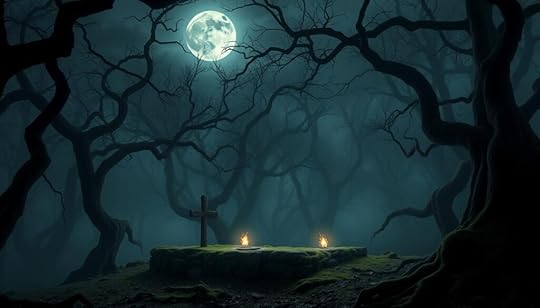
Spooky legends often arise from a rich tapestry of historical origins and cultural narratives. These tales encapsulate societal fears and reflect human experiences, intertwining the past with the supernatural. Within the United States, eerie folklore flourishes in different regions, showcasing how history influences the stories people tell.
For example, sightings of famous spirits like Abraham Lincoln near the old Springfield capitol manifest how historical context shapes spooky legends. Such stories not only honor the past but also create connections between communities and the events that defined them. Ghosts like Benjamin Franklin’s apparition near the American Philosophical Society library evoke memories of innovation and American enlightenment.
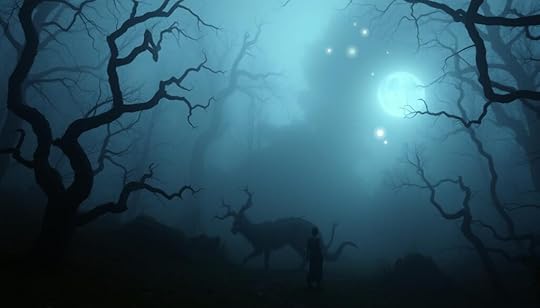
The enduring presence of figures such as Anne Boleyn, whose ghost is said to roam the Tower of London, exemplifies how historical events can transcend time and foster a narrative rich in mystery. Urban legends, such as the chilling tale of Resurrection Mary in Chicago, continue to thrive as they evolve with modern life, often acting as cautionary symbols. These narratives tap into significant social beliefs and cultural values.
In cities like Oakland, the haunting stories of locations like Mills College and the Paramount Theatre reveal how eerie folklore sustains community ties. Engaging with these spooky legends encourages reflection on shared histories while attracting those fascinated by the mystical. The ghostly encounters serve as lively anecdotes that not only entertain but also promote the preservation of local heritage.
Urban Legends: Haunting Stories from Coast to CoastUrban legends scar the fabric of communities, weaving vibrant tales that reflect the fears and values of society. These haunted stories often carry a depth that goes beyond mere entertainment, raising questions about morality, truth, and the unknown. As you delve into these chilling myths, you’ll uncover how stories like the Bandage Man and the Lady of Cannon Beach have gained traction over the decades.
The Role of Urban LegendsEach urban legend serves as a mirror to the anxieties of the population it emerges from. Consider the eerie accounts surrounding Lake Lanier in Georgia, where tragic incidents lead to countless haunted stories about the lake’s depths. You find similar themes across the United States, where legends shed light on local concerns. The fascinating evolution of these narratives speaks volumes about societal changes.
Some legends, such as La Chupacabra, have origins rooted in folklore yet capture modern imaginations. The creature famously stalks livestock in reports from Puerto Rico, its tales reverberating throughout Latin America. This blend of the supernatural and cultural commentary underlines the impact urban legends have on the community psyche.
The following table compares some noteworthy urban legends across the nation:
LegendLocationYear OriginatedKey FeatureBandage ManOregon1950sLegend targets teens in carsHannah CrannaConnecticutUnknownWicked witch believed to cast spellsMr. Chew GhostDelaware1741Haunts courthouse and nearby treeLake LanierGeorgia1994 – presentHigh number of drowningsWater BabiesIdahoUnknownNative American legend of spirit beings
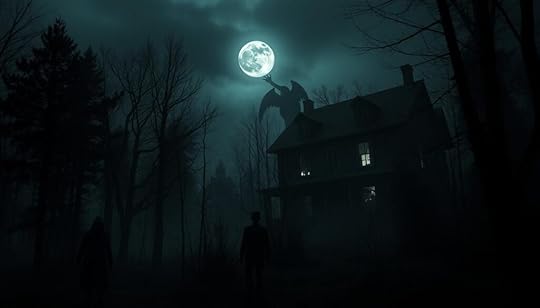
Urban legends provide a captivating glimpse into human fears, seamlessly blending fact and fiction. Each tale you encounter has been shaped by the experiences and beliefs of those who tell them, proving that even in contemporary life, these gripping haunted stories resonate with lasting significance.
Ghostly Folklore in the American SouthThe American South teems with ghostly folklore, rich narratives that reflect its deep historical roots and cultural complexities. From the eerie whispers of haunted plantations to the troubled spirits of former slaves, these haunted stories often address themes of loss and trauma, creating a tapestry of dark legends that resonate through time.
Charleston, South Carolina, stands proudly as one of the most haunted cities in the region. One fascinating tale involves Poogan’s Porch, a restaurant that’s been serving guests since 1976 and is known for its resident ghost, which many diners claim to encounter. The story of Bubba the Ghost arises from an accident involving a millworker, intertwining history with the supernatural at the South Carolina State Museum, in operation since 1988.
The ghostly landscape isn’t limited to South Carolina. North Carolina boasts its own share of paranormal intrigue, such as the Brown Mountain Lights. Observed for over two centuries, these mysterious lights captivate onlookers, particularly between September and November. Adding to this are tales of the Moon-Eyed People, a group from Cherokee folklore described as unique beings, believed to have thrived since around 1170 CE.
Equally intriguing are the infamous legends emanating from Tennessee, particularly the Bell Witch haunting. This phenomenon, which attracted figures like General Andrew Jackson, spanned from the early 19th century until the late 1820s. It exemplifies the power of dark legends to weave together personal experiences, community history, and cultural identity.
Every tale, whether brimming with dread or sprinkled with humor, serves a vital role in shaping local culture. These haunted stories provide entertainment, offer explanations for the unexplainable, and reflect the social issues embedded within communities. The significance and allure of ghostly folklore in the American South lie not merely in its chilling narratives but also in its rich connection to heritage and identity.
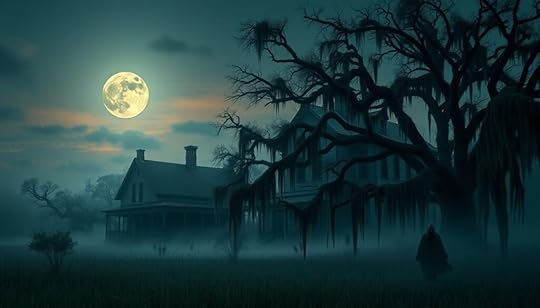
The Northeast is a treasure trove of mysterious myths that weave together history and hauntings, creating a tapestry of eerie folklore. From Maine to Massachusetts, each town holds stories that captivate the imagination. You might hear tales of the legend of Dudleytown in Connecticut, a town that prospered in the mid-18th century before being enveloped by misfortune. Locals often share various spooky legends, recalling how residents began to leave due to the community’s alleged curses. That sense of tragedy and loss resonates profoundly within these narratives.
Maine boasts a rich array of 25 haunting and paranormal books that dive deep into its mysterious myths. These stories often include haunted lakes where a woman’s spirit is said to appear, her wet hair glistening as she sings “Kumbaya.” Community storytelling is vital to discovering these eerie folklore anecdotes, as locals serve as the primary sources for these tales.
The Connecticut River, the largest river in New England, has its share of quaint yet harrowing stories of mysterious creatures spotted along its vast expanse. Reports tracing back to the early 1800s describe sightings of a serpent-like creature, snaking along the river, described to be over a hundred feet long. These spooky legends persist, drawing thrill-seekers and locals alike into exploring the regions along the river.
A visit to Vermont will uncover the chilling tales of Lake Memphremagog, said to house a mysterious monster. The Abenaki tribe warned settlers about this predatory creature, further adding to the air of mystery surrounding the lake. Meanwhile, Rhode Island showcases tales of dark forces and devilish specters, like the Glocester Ghoul, which haunt the wooded areas, stirring up unease in those who wander too far from the light.
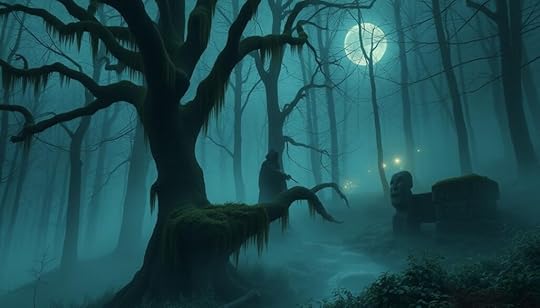
The eerie folklore of the Northeast is best uncovered through physical exploration. You may find that the paths lead to tales that are often just waiting to be shared, enriching each community’s cultural heritage of storytelling and myth-building. The adventurous spirit within you will be rewarded as you delve into these mysterious myths, discovering the unique stories that truly shape the Northeast.
The Eerie Folklore of the MidwestThe Midwest showcases a rich tapestry of eerie folklore, making it a hub for chilling myths and urban legends. Within this region, a significant 63% of reported encounters involve ghostly figures, illustrating a potent connection to the supernatural. Notable sites such as the Ohio State Penitentiary and the Pfister Hotel serve as focal points for these narratives, blending history with legend.
During the fall, folklore incidents rise dramatically, with occurrences 37% higher than in other regions. This seasonal spike draws communities together, as spooky tales come to life around bonfires and in local storytelling events. Many of these eerie stories revolve around mysterious disappearances, with 45% of the collective tales featuring individuals simply fading from existence. Local folklore experts have noted a thrilling 22% increase in ghost sightings over the past decade, further fueling the region’s intrigue.
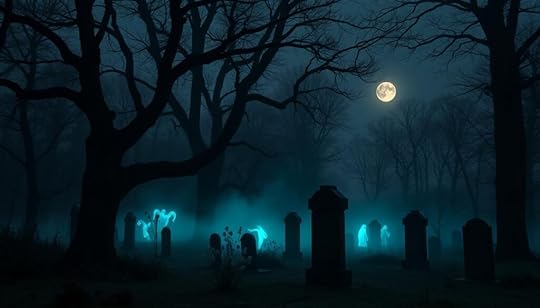
In total, 80% of these tales are passed down through generations, highlighting the importance of oral traditions in preserving this captivating folklore. Haunted houses represent 19% of all eerie stories within the Midwest, captivating both residents and visitors alike as they explore the ghostly connections tied to these historic sites.
Key StatisticsPercentageInvolvement of ghostly figures63%Increase in folklore during fall37%Mysterious disappearances45%Increase in ghost sightings over the last decade22%Haunted houses in folklore19%Stories passed down through generations80%This unique blend of history and chilling myths ensures that the eerie folklore of the Midwest remains a compelling subject for storytellers and explorers alike, captivating those who dare to delve deeper into its mysteries.
Chilling Myths from the Western FrontierThe Western Frontier is a treasure trove of chilling myths, each telling the story of a time filled with both hardship and the supernatural. These tales often reflect the experiences of settlers navigating an untamed land. Among the most notable is the Death Ship of the Platte River. This ghostly vessel, rumored to appear once every 25 years, carries a skeletal crew and presents a foreboding message to those who see it—the face of someone they know can signal their impending doom. Such chilling myths speak to the innate fear of the unknown.
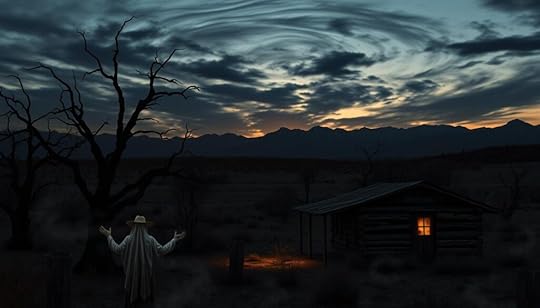
Another striking aspect of eerie folklore comes from the ghost towns of the West. Take, for instance, the town of Garnet in Montana. Established after gold was discovered in 1865, it now serves as a reminder of boom and bust, where whispers of past fortunes mingle with spooky legends. The town of Bannack, where Montana Vigilantes handed justice, adds depth to its haunting narrative, as it’s said that the ghost of the sheriff still roams the area.
The Phantom Train of Marshall Pass—sighted in the 1880s—continues to intrigue those brave enough to explore its shadowy remnants.The infamous Big Jack Davis, known as the Bandit Ghoul of Six Mile Canyon, serves as a spine-chilling reminder of the lawlessness that once pervaded the region.El Muerto, a headless horseman from Texas, highlights the tales of outlaws and their grim endings.Skinwalker Ranch in Utah adds a layer of paranormal intrigue linked to Native American folklore.The collection of these chilling myths and spooky legends illustrates how the struggles faced by early settlers have taken form through storytelling. From haunted locations like Tombstone, Arizona, which witnessed pivotal historical events, to the eerie stories of spirits at the Bullock Hotel in Deadwood, South Dakota, you can find a mixture of reality and the supernatural defining the culture of the Western Frontier.
Dark Legends of Native American FolkloreNative American folklore is rich with dark legends, each offering a glimpse into the mystical and the otherworldly. Supernatural tales often impart significant cultural lessons wrapped in chilling narratives. Among the many stories, you will encounter the eerie presence of Mishipeshu, a formidable being resembling a Water Panther. This creature holds great sway among the Algonquin-speaking tribes surrounding the Great Lakes, symbolizing power over the water and secrecy.
The Windigo represents another dark legend prevalent in the stories of the Cree and Ojibwe communities. This terrifying man-eating ice creature serves as a cautionary tale about greed and consumption, warning of the thin line between humanity and monstrosity. Its haunting nature has left a lasting impact, evident in various pop culture adaptations, making it a contemporary reference point for the supernatural.
The Dark Watchers, also known as “los Vigilantes Oscuros,” haunt the Santa Lucia mountains of California. These shadowy figures, often described as tall and cloaked, are accompanied by an unsettling feeling of being watched, captivating those who venture into the hills. Their sightings date back to the 1700s, establishing a legacy of fear and curiosity.
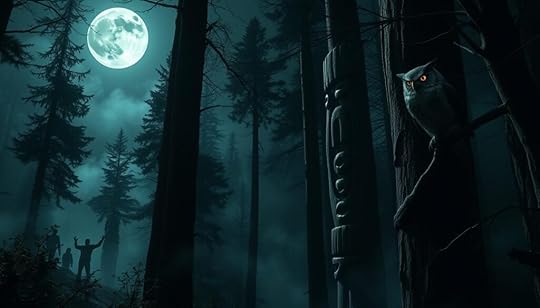
These dark legends thread through the fabric of Native American folklore, connecting spiritual beliefs to natural phenomena. Such stories not only entertain but also preserve vital cultural teachings, reminding you of the profound respect for nature and its mysteries ingrained in these traditions.
Beware the Night Marchers: Hawaiian FolkloreHawaiian folklore is steeped in supernatural tales, particularly the haunting legend of the Night Marchers. These spirits, thought to be the restless souls of ancient tribal warriors, are said to march in large groups to honor their ancestors. Accounts of eerie encounters are common among Hawaii residents, with many either experiencing these chilling events themselves or knowing someone with a spine-tingling story.
Various locations in Hawaii have documented sightings of these spectral warriors. For instance, the Kamehameha Schools campus in Kapalama, which has stood for over a century, is rumored to have welcomed Night Marchers on numerous occasions. Likewise, Kualoa Ranch on Oahu’s windward coast has become infamous for reports of Night Marchers around the remains of numerous Hawaiian chiefs, with some locals attributing nighttime car accidents to their presence.
The historical context behind these eerie legends is profound. Night Marchers are believed to emerge during specific nights tied to ancient Hawaiian celebrations. Notably, during Po Kane, warriors, chiefs, and attendants are said to march, while on Po Akua, the spirits of chiefs march between sunset and sunrise. Such tales weave a rich tapestry of tradition that speaks of respect for lineage and the supernatural.
While these encounters can be daunting, understanding the respect surrounding the Night Marchers is crucial. Some precautions exist within the folklore. For example, many believe that planting living ti shrubs can help ward off these spirits, contributing to the preservation of peace in areas they may traverse.
LocationLegendSignificanceKamehameha SchoolsNight Marchers frequenting the campusHistorical ties to ancient warriorsKualoa RanchSpotted near ancient chiefs’ remainsReports of nighttime disturbances and accidentsLa’ieSpirits of soldiers searching for escapeesCity of refuge in ancient Hawaii
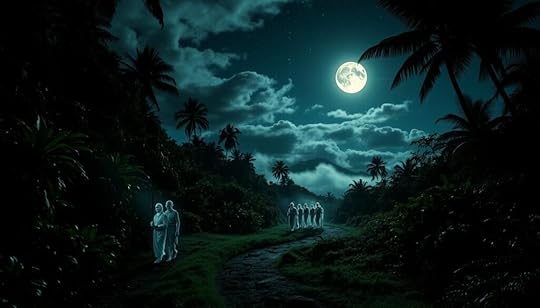
Many witnesses describe chilling auditory experiences while encountering these spirits, including chanting and the sound of drums. The presence of barriers does not deter the Night Marchers, as violations against them could result in dire consequences for those who dare to look upon them. The spiritual connection forged through this folklore underscores its lasting impact on Hawaii’s cultural landscape.
Terrifying Tales from the Appalachian MountainsThe Appalachian Mountains, spanning from Alabama to Pennsylvania, are steeped in a rich tradition of terrifying tales that reflect the unique struggles of mountain life. These stories convey deep emotions, fears, and hopes, often intertwining with the fabric of Appalachian folklore. The legends featuring ghostly figures, mythical creatures, and accounts from historical communities enrich the narrative of this rugged terrain.
One of the most haunting tales is that of the Bone Lady, a mysterious figure shrouded in legend. She is said to be connected to high child mortality rates in a northern Appalachian town, evoking fear and sorrow. Stories like this reveal not only the cultural heritage but also the challenges that many faced throughout history.
Among the many spooky legends, the Witch of Booger Hole, involving a character known as Grandma Thorne, captures attention for its eerie quality. The tales of witches and curses circulate within small communities, fostering a sense of shared local identity while thrilling listeners with spine-chilling details.
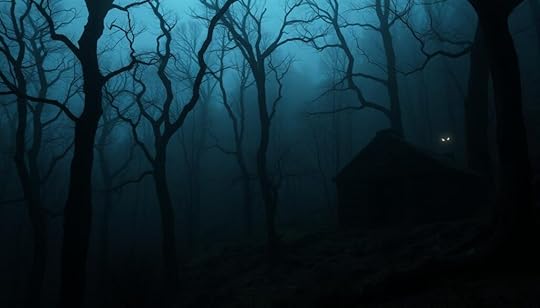
West Virginia, in particular, is home to hundreds of bizarre ghost tales. Attractions like the Barbour County Historical Museum in Philippi display mummies and house stories of the region’s past, with contact for visitors at 304-457-4846. Those seeking more shadows and legends can explore the Weston State Hospital, famously known as the Trans-Allegheny Lunatic Asylum, which conducts haunted tours until November 6th. For reservations or inquiries, call 304-269-5070.
Local events further engage communities around these terrifying tales. Tourists and residents alike can visit the Cass Scenic Railroad for Halloween train rides or brave the Second Creek Haunted Trail in Monroe County to support those in need. For more details, contact 304-645-7450 or 304-645-2696. Each of these experiences brings the spooky legends of the Appalachian Mountains to life in thrilling ways.
LocationActivityContact NumberBarbour County Historical Museum, Philippi, WVMummy Exhibit304-457-4846Weston State Hospital, Weston, WVHaunted Tours304-269-5070Cass Scenic Railroad, WVHalloween Train RidesN/ASecond Creek Haunted Trail, Monroe County, WVCommunity Support Event304-645-7450 / 304-645-2696Whipple Company Store, Scarborough, WVHaunted History Tours304-465-0331Waveland State Historic Site, Lexington, KYParanormal Investigation Tours(859) 272-3611Pinheads Graveyard, NCHaunted Trail828-670-8228Bell Witch Cave & Farm, Adams, TNHaunted Tours615-696-3055These captivating tales not only entertain but also serve to strengthen community bonds through shared history and spooky legends. The Appalachian Mountains provide a rich tapestry of folklore, waiting to be explored by anyone willing to delve into their depths.
Famous Haunted Locations Across the USThe United States features a variety of famous haunted locations, each steeped in ghostly folklore and eerie tales. From coast to coast, these sites offer intriguing glimpses into the supernatural, drawing visitors eager to explore their haunted histories.
The Whaley House in San Diego stands out as one of the most renowned haunted locations, with its past as a gallows site and graveyard contributing to its notoriety. Guests often recount strange sounds and sightings, making it a must-visit for ghost enthusiasts.
The Stanley Hotel in Colorado is famous for its paranormal activities, which inspired Stephen King’s “The Shining.” Visitors frequently report apparitions and eerie noises that add to the hotel’s ghostly charm.
In addition to these, the Queen Mary ocean liner boasts an unsettling history, with reports of 49 deaths aboard. Many now regard it as a haunted site, drawing both fans of chilling tales and those curious about its ghostly folklore.
Below is a table showcasing some of the most famous haunted locations in the U.S., along with their notable features:
LocationNotable FeaturesReported HauntingsWhaley House, San DiegoFormer gallows siteStrange sounds, apparitionsStanley Hotel, ColoradoInspiration for “The Shining”Apparitions, eerie noisesQueen Mary, CaliforniaFamous ocean linerGhost sightings, unexplained activitiesMyrtles Plantation, LouisianaBuilt in 1796Multiple hauntings reportedHill House, Texas1880 Victorian mansionParanormal investigationsWaverly Hills Sanatorium, KentuckyFormer tuberculosis hospitalNumerous deaths, reported visionsThese famous haunted locations captivate the imagination with their ghostly folklore and eerie tales. Whether you’re a skeptic or a firm believer, visiting these sites lets you dive into the spooky history that shapes American culture.
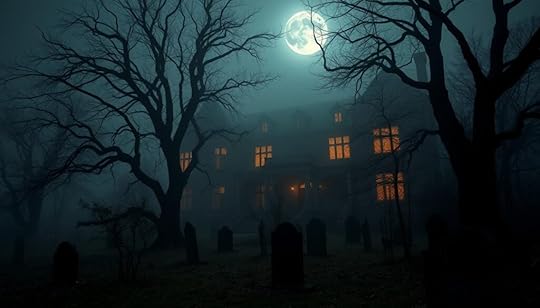
The world is filled with supernatural tales that delve into the realm of unexplained phenomena. From mysterious disappearances to encounters with cryptids, these stories have sparked curiosity and astonishment across the nation. Many residents of Taos, New Mexico, report hearing a perplexing low-frequency hum, with only about 2 percent acknowledging its presence. Such an occurrence raises questions about what lies beyond our understanding.
While belief in creatures like Bigfoot persists, the absence of a single confirmed body casts doubt on their existence. It’s fascinating to think that despite the thousands necessary for a breeding population, tangible evidence remains elusive. This reflects the intrigue of eerie folklore that thrives on mystery, often challenging our perceptions of reality.
Additionally, certain unexplained disappearances captivate our imagination, reminiscent of cases like the crew of the Marie Celeste, where no answers surfaced. While most missing persons eventually return, these anomalies continue to evoke questions about the unknown.
Eyewitness accounts of ghostly encounters abound, despite the lack of definitive proof. Sincere reports of interactions with spirits keep the flame of curiosity burning. This intertwines with the wider belief in psychic powers and ESP, even though scientific inquiries often yield negative or ambiguous results.
The placebo effect exemplifies the connection between the mind and body, demonstrating how the belief in healing can bring about real changes, reinforcing the depth of human experience. Numerous books explore these supernatural tales, offering perspectives from experts in fields like New England folklore and cryptozoology. This diversity enriches the aura of eerie folklore.
Ultimately, whether you seek entertaining stories, thrilling narratives, or serious discussions about the paranormal, the world of unexplained phenomena invites exploration and reflection.
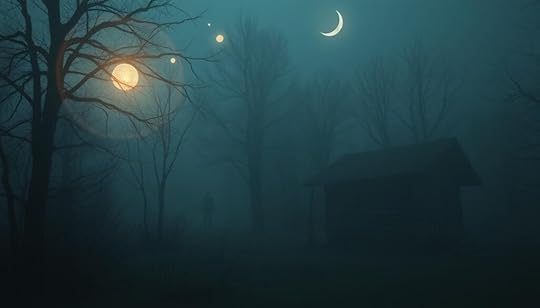
Folklore serves as a vital thread in the tapestry of American culture, preserving collective memories and identities. As you navigate through history, you’ll encounter eerie stories that not only entertain but also shape perceptions and cultural beliefs. These narratives often draw from various regions, each contributing unique elements that encapsulate local customs and societal values.
In American colleges, ghostly rumors paint a vivid picture of campus life. Dormitories and residence halls buzz with tales of spirits, while older buildings, with their aged architectures, harbor countless stories of hauntings. Libraries and theaters, often cloaked in silence during late hours, evoke a sense of mystery and are frequent subjects of chilling folklore. Basements, typically seen as mundane spaces, take on an eerie ambiance, often linked to supernatural encounters.
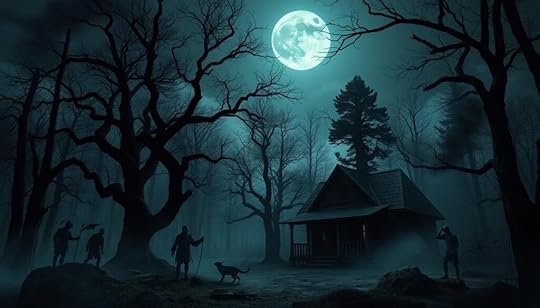
Additionally, urban legends thrive within these academic communities, blurring the lines between myth and reality. Tales of on-campus tunnels, often forbidden to explorers, are steeped in incidents of untimely deaths and historical tragedies, captivating the imaginations of students. These ghost stories interrupt daily life, presenting alternative narratives that challenge accepted histories.
The influence of Hollywood stereotypes on contemporary folklore cannot be overlooked. While these tales entertain, they also reveal the deeper layers of memory and significance unique to each location. The choice to believe or engage with these narratives impacts perceptions, allowing individuals to connect with their surroundings on a different level.
At the heart of America’s founding lies a collection of national myths and tall tales that wrap around figures like Christopher Columbus and George Washington. Each of these personalities not only represents history but also embodies folklore that has entrenched itself in cultural awareness. From the Pilgrims and the first Thanksgiving in 1621 to revolutionary figures like Betsy Ross, these narratives meld history with legend, enriching American culture.
Engagement with eerie stories, myths, and urban legends fosters community involvement and sparks curiosity. These folkloric elements are central to understanding the evolution of American culture, showcasing how stories, whether borne from fear or optimism, influence perceptions and collective identity.
ConclusionIn wrapping up our exploration of eerie folklore, it becomes clear that these cultural narratives harbor an undeniable capacity to shape human experiences across the United States. From the chilling tales of the Night Marchers in Hawaii to the haunting allure of the Bath Game in Japan, spooky legends serve as cautionary tales that enchant and educate audiences. The intricate weave of these stories reflects not only the fears and values of the communities that birthed them but also their deep-seated desires for connection and understanding.
As you engage with these extraordinary tales, you become a participant in a rich tradition that embraces the art of storytelling. This tradition invites you to consider the magic and mystery behind each legend and the societal significance they carry. By delving into the world of eerie folklore, you’re not merely reading; you’re adding your voice to the collective memory that shapes the cultural landscape of America.
Ultimately, the exploration of eerie folklore allows you to confront the shadows of the past while gaining insight into your perceptions of reality. Each story offers lessons that extend beyond mere entertainment, revealing the complexity of human emotions and experiences. As you journey through these tales, remember that you are not just an observer—you are part of a narrative that transcends time and space.
FAQWhat is eerie folklore and why is it important?Eerie folklore encompasses the rich tapestry of chilling stories that reflect cultural beliefs and local history, capturing the imagination while preserving generations of narratives that shape community identities.
How do spooky legends originate?Spooky legends often emerge from a mix of historical events, societal fears, and human experiences, evolving over time to reflect local concerns and values shaped by cultural differences and storytelling traditions.
What role do urban legends play in society?Urban legends serve to entertain, instill caution, or make social commentary, often highlighting issues relevant to communities. They blur the line between truth and fiction, allowing audiences to engage with cultural narratives.
Are there common themes in ghostly folklore across America?Yes, common themes include loss, tragedy, and the supernatural, as ghostly folklore often conveys both cautionary messages and insights into cultural heritage, reflecting societal values and historical tragedies.
How can I learn more about local eerie tales?You can explore local libraries, historical societies, and cultural events where storytelling is celebrated. Participating in ghost tours or visiting haunted locations are great ways to dive into eerie folklore.
What makes haunted locations significant in American culture?Haunted locations often serve as cultural touchpoints, their ghostly histories illuminating local legends and attracting tourism, thus enriching the community’s cultural and social fabric.
What are some examples of mysterious myths in the Northeast?Seminal tales like the legend of Dudleytown in Connecticut and the Gurdon Light in Arkansas exemplify the mysterious myths in the Northeast, often reflecting themes of loss and community history.
Why do Native American legends incorporate dark elements?Dark legends within Native American folklore often intertwine cultural beliefs with moral teachings, conveying deep lessons and perspectives on the environment and community values, while also preserving their sacred traditions.
Are there practical tips for encountering supernatural tales?When engaging with supernatural tales, it’s wise to approach them with an open mind, respect local customs, and understand the historical context to fully appreciate their significance and the community’s connection to the legends.
What impact does folklore have on American culture today?Folklore plays a vital role in shaping American culture through storytelling, influencing art, literature, and social practices, and helping communities maintain their unique identities while fostering a shared sense of history.



